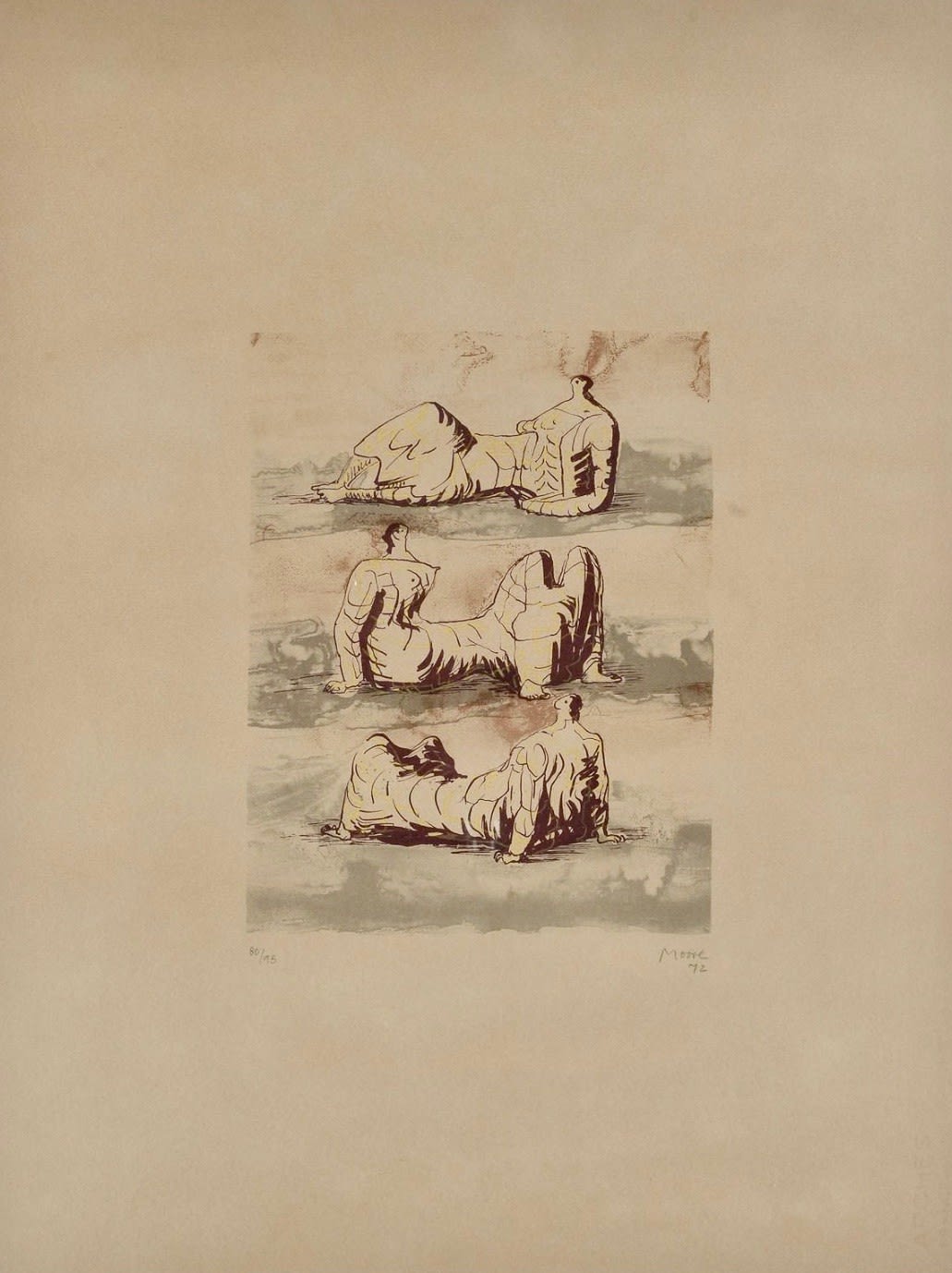Henry Moore U.K., 1898-1986
Three reclining figures, 1971
Lithograph in four colours (black, orange, yellow-grey, grey) on Rives paper
Signed by the artist's hand, lower right on recto
Signed by the artist's hand, lower right on recto
29.8 x 22.9 cm
© The Estate of Henry Moore
Further images
Henry Moore's 'Three Reclining Figures' (1971) features three abstracted human forms rendered in Moore's distinctive style, characterised by undulating, biomorphic shapes that blur the boundary between figuration and abstraction. Moore's...
Henry Moore's 'Three Reclining Figures' (1971) features three abstracted human forms rendered in Moore's distinctive style, characterised by undulating, biomorphic shapes that blur the boundary between figuration and abstraction.
Moore's artistic vocabulary was shaped by multiple influences, including primitive art from the British Museum, European modernism, and the Yorkshire landscape of his birth. The reclining figure theme allowed Moore to explore the relationship between the human form and landscape, with the undulating shapes of his figures often echoing the rolling hills of his native Yorkshire.
Moore is a titan of British modernism who profoundly influenced subsequent generations of artists. His work bridged the gap between abstraction and figuration, establishing a uniquely British form of modernist sculpture that earned him recognition as the most celebrated British artist of his time.
Moore's artistic vocabulary was shaped by multiple influences, including primitive art from the British Museum, European modernism, and the Yorkshire landscape of his birth. The reclining figure theme allowed Moore to explore the relationship between the human form and landscape, with the undulating shapes of his figures often echoing the rolling hills of his native Yorkshire.
Moore is a titan of British modernism who profoundly influenced subsequent generations of artists. His work bridged the gap between abstraction and figuration, establishing a uniquely British form of modernist sculpture that earned him recognition as the most celebrated British artist of his time.





